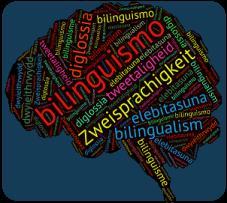Kořenář, M., Treffers-Daller, J., & Pliatsikas, C. (2023): Brain structure adapts dynamically to highly demanding bilingual experiences: insights from interpreters and translators. Ampersand. DOI: 10.1016/j.amper.2023.100148
To access, click here
Abstract
It remains an open question how the brain adapts structurally to handle strenuous cognitive challenges. Interpreters and translators rely on high cognitive control to regulate two languages in their jobs, which makes them ideal models in investigating experience-based neuroplasticity induced by exceptional cognitive demands. Using structural MRI, we compare volumes of the caudate nucleus and putamen, structures involved in bilingual language control, in three groups of highly experienced bilinguals: translators, interpreters and highly experienced bilinguals. Between-group comparisons revealed larger volumes for both structures in interpreters and translators compared to highly experienced bilinguals. We used Bayesian Generalized Additive Mixed Models to model effects of quantified general bilingual experiences on the structures of interest. Critically, dynamic, group-specific volumetric trajectories of the ROIs related to general bilingual experiences were revealed. Specifically, whereas caudate volumes increased as a function of bilingual experiences across all groups, they started to return to baseline volumes at the high points of experiences in the two professional groups only. As for the putamen, the expansion-renormalisation pattern was replicated in interpreters only, whereas in translators and highly experienced controls, putamen volumes simply increased as a function of bilingual experiences. This pattern of results suggests that bilingualism-related brain adaptations manifest differently in different brain regions and are modulated by quantitative and qualitative differences in bilingual experiences. These findings shed new light on the ways in which extremely demanding bilingual experiences affect neuroplasticity in bilinguals.

